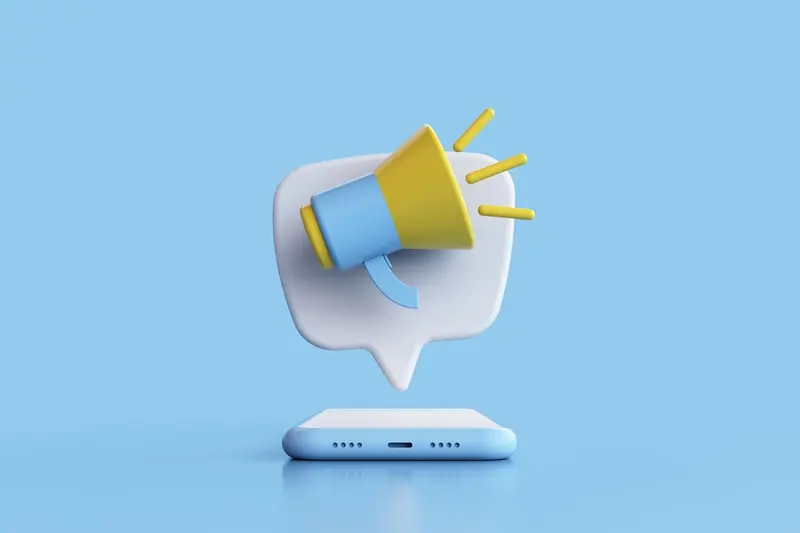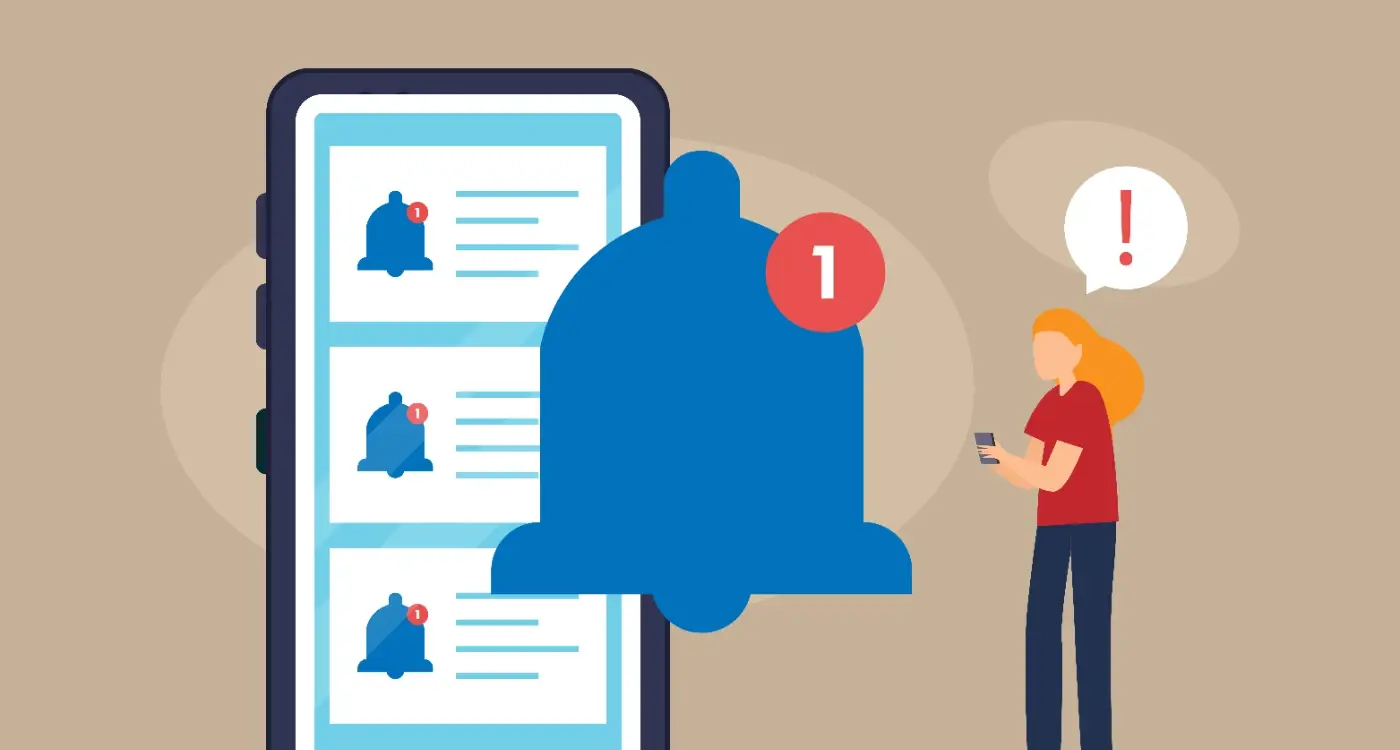What's The Difference Between Push Notifications On iOS And Android?
Push notifications are those little messages that pop up on your phone screen from apps you've installed—they're everywhere these days. Whether you're using an iPhone or an Android device, you'll see them constantly; from social media updates to shopping reminders to news alerts. But what many people don't realise is that these notifications work quite differently depending on which platform you're using.
I've been developing mobile apps for both iOS and Android for years now, and one of the most common questions I get from clients is about platform differences. They want to know why their app behaves one way on their iPhone but completely differently on their colleague's Samsung. The truth is, Apple and Google have very different approaches to notifications—and these differences affect everything from how they look to how users control them.
The way notifications work on iOS versus Android isn't just about visual design; it's about completely different philosophies on user experience and system control
Understanding these platform differences is crucial for anyone building an app or just trying to make sense of why their phone behaves the way it does. Android notifications tend to be more flexible and customisable, whilst iOS takes a more streamlined approach. Both have their strengths and weaknesses, and both continue to evolve with each new version.
What Are Push Notifications
Push notifications are those little messages that pop up on your phone screen—even when you're not using the app that sent them. You know the ones I'm talking about: the news alert about breaking stories, the reminder from your shopping app about items left in your basket, or that ping from your favourite game telling you it's time to collect your daily rewards.
Think of them as a way for apps to tap you on the shoulder and say "hey, something's happening!" They can appear as banners at the top of your screen, badges with numbers on your app icons, or even make your phone buzz or play a sound. The clever bit is that these messages get delivered through your phone's operating system—not through the app itself.
How Do They Actually Work?
When an app wants to send you a notification, it doesn't communicate directly with your phone. Instead, it sends the message to a special service run by Apple (for iPhones) or Google (for Android phones). This service then delivers the notification to your device, which displays it according to your settings.
The whole process happens in seconds, which is why you can get notifications about things happening right now—like a friend commenting on your photo or a flash sale starting at your favourite shop. This immediate connection is one of the key reasons why mobile apps are so effective at enhancing customer engagement.
How iOS Handles Push Notifications
Apple's approach to push notifications is pretty straightforward—they keep things simple and controlled. When your app wants to send a notification, it doesn't do it directly. Instead, it sends a message to Apple's Push Notification Service (APNs), which then delivers the notification to your device.
This system works brilliantly because Apple manages all the heavy lifting. Your iPhone stays connected to Apple's servers, so notifications can arrive even when your app isn't running. The whole process happens in the background without draining your battery.
iOS Notification Features
iOS notifications come with several built-in features that make them quite useful:
- Badge numbers that appear on your app icons
- Sound alerts that you can customise
- Lock screen previews
- Notification grouping by app
- Rich media support for images and videos
- Interactive buttons for quick actions
One thing I really appreciate about iOS notifications is how they respect user privacy. Apple requires apps to ask permission before sending notifications, and users can easily turn them off for any app. The system also lets you schedule quiet hours and choose whether notifications appear on your lock screen.
Always test your iOS notifications on different devices and iOS versions—notification behaviour can vary slightly between iPhone models and software updates.
Apple's strict guidelines mean iOS notifications tend to be more consistent across different apps, which creates a smoother user experience overall. This consistency is one of the factors that helps app developers instil confidence in their customers.
How Android Handles Push Notifications
Android takes a different approach to push notifications compared to iOS—one that's actually quite clever when you think about it. Google built Firebase Cloud Messaging (FCM) to handle all the heavy lifting, and it works brilliantly across millions of devices worldwide.
When your app needs to send a notification, it goes through FCM first. This service acts like a middleman, taking your message and delivering it to the right Android device. The beauty of this system is that it works whether the user's phone is made by Samsung, Google, OnePlus, or any other Android manufacturer.
Key Features of Android Notifications
Android gives developers much more flexibility than iOS does. You can create rich notifications with custom layouts, action buttons, and even interactive elements. The notification drawer can be pulled down from the top of the screen, and users can expand notifications to see more details.
- Custom notification layouts and designs
- Multiple action buttons within notifications
- Notification channels for better organisation
- Rich media support including images and videos
- Bundled notifications for multiple messages
Android's Notification Channels
One thing Android does particularly well is notification channels. These let apps group different types of notifications together, so users can control what they want to see. For example, a messaging app might have separate channels for direct messages, group chats, and promotional updates.
Visual Differences Between iOS and Android Notifications
I've spent countless hours designing notification systems for both platforms, and the visual differences are striking. When you receive a notification on an iPhone, it appears as a clean banner at the top of your screen or a neat bubble on your lock screen. Apple keeps things minimal—just the app icon, a title, and your message. It's simple, elegant, and very Apple-like in its approach.
Android notifications tell a different story entirely. They're much more flexible and can show far more information at once. You might see large images, multiple action buttons, progress bars, or even mini music players right in the notification itself. Android lets app developers get creative with how much they want to show you.
Lock Screen Presentation
On iOS, notifications stack neatly and group by app automatically. Android gives you more control over what appears on your lock screen, but the trade-off is that things can look a bit cluttered if you're not careful with your settings.
The biggest difference I notice is that iOS prioritises consistency whilst Android focuses on customisation and information density
These platform differences mean that Android notifications can sometimes feel overwhelming compared to iOS's more restrained approach. Neither is right or wrong—they just reflect different design philosophies that cater to different user preferences.
Technical Differences for App Developers
When you're building an app, the technical side of push notifications couldn't be more different between iOS and Android. Apple uses something called Apple Push Notification Service (APNs) which requires a special certificate—think of it like a security pass that proves your app is allowed to send notifications. You'll need to set this up through your Apple Developer account and it needs renewing every year.
Different Systems, Different Rules
Android uses Firebase Cloud Messaging (FCM) which is Google's system. The good news? It's much simpler to set up. You just need to add your app to Firebase console and download a configuration file. No certificates to worry about or yearly renewals that catch you off guard.
The Code Reality
Here's where things get interesting—you'll need completely different code for each platform. iOS uses Swift or Objective-C with specific delegate methods, whilst Android uses Java or Kotlin with different service classes. The notification payload structure is different too; iOS has strict limits on message size and requires specific formatting, whereas Android gives you more flexibility with rich media and custom actions.
Testing is another story altogether. iOS notifications only work on real devices, not the simulator. Android lets you test on emulators, which speeds up development considerably. Trust me, these differences add up quickly when you're juggling both platforms! Understanding these technical nuances is part of what separates good apps from great ones.
User Control and Settings on Each Platform
I've spent years helping clients understand why their apps aren't performing as expected, and often it comes down to one simple thing—users have turned off notifications entirely. This happens more than you'd think, and it's usually because people feel overwhelmed by the sheer number of alerts they receive daily.
The good news is that both iOS and Android give users plenty of control over their notification experience, though they handle it quite differently. On iOS, users can access notification settings through the main Settings app, where they'll find options to turn notifications on or off for each app, choose delivery styles, and even schedule "Do Not Disturb" times. Apple keeps things relatively straightforward—notifications are either on or off, with some basic customisation options.
Android's More Granular Approach
Android notifications offer much more granular control. Users can access settings either through the main Settings app or by long-pressing on any notification. Android allows users to create notification channels, set different priority levels, and even snooze notifications for later. They can also choose which apps can override "Do Not Disturb" mode.
Always test your app's notification settings on both platforms during development. What works well on iOS might feel overwhelming on Android, and vice versa.
Getting your notification strategy right is crucial for success—it's one of the main factors that determines whether your business will benefit from a mobile app in the long term.
| Feature | iOS | Android |
|---|---|---|
| Channel Creation | No | Yes |
| Priority Levels | Basic | Detailed |
| Snooze Options | Limited | Full Control |
Smart notification management is also key to keeping users coming back to your app. When users feel in control of their notification experience, they're more likely to keep the app installed and engage with it regularly.
For businesses considering mobile apps, understanding these platform differences can help you make better decisions about your notification strategy. Whether you're a large corporation or exploring how small businesses can benefit from mobile apps, getting notifications right from the start is essential.
The impact of well-designed notifications extends beyond just user experience—they can be a powerful tool for helping your brand stand out in a crowded marketplace. When done thoughtfully, notifications become a direct line of communication with your customers.
From a business perspective, understanding the technical landscape of mobile app development, including notification systems, is crucial for making informed decisions about your app strategy. This knowledge helps you appreciate how mobile apps are developed and their true business potential.
Conclusion
After working with both iOS and Android push notifications for years, I can tell you that whilst they serve the same basic purpose, the differences between them are quite significant. iOS keeps things simple and consistent—you get one notification style, clear user controls, and a straightforward development process through Apple Push Notification Service. Android gives you more flexibility with rich notifications, custom layouts, and different priority levels, but this comes with added complexity.
For users, the choice often comes down to personal preference. iOS users get a clean, predictable experience that works the same way across all apps. Android users can enjoy more interactive notifications with buttons, images, and custom actions, plus they have more granular control over what they receive.
If you're developing an app, understanding these differences is crucial for creating the best possible user experience. Don't just build one notification system and hope it works well on both platforms—take advantage of what each platform offers. When sending alerts to users, iOS users expect simplicity and reliability, whilst Android users often appreciate the extra features and customisation options.
The key is matching your notification strategy to your users' expectations and the platform's strengths. Get this right, and you'll see better engagement rates and happier users.
Share this
Subscribe To Our Learning Centre
You May Also Like
These Related Guides

How Do Push Notifications Actually Work In Mobile Apps?

How Do I Add Push Notifications to My PWA?



